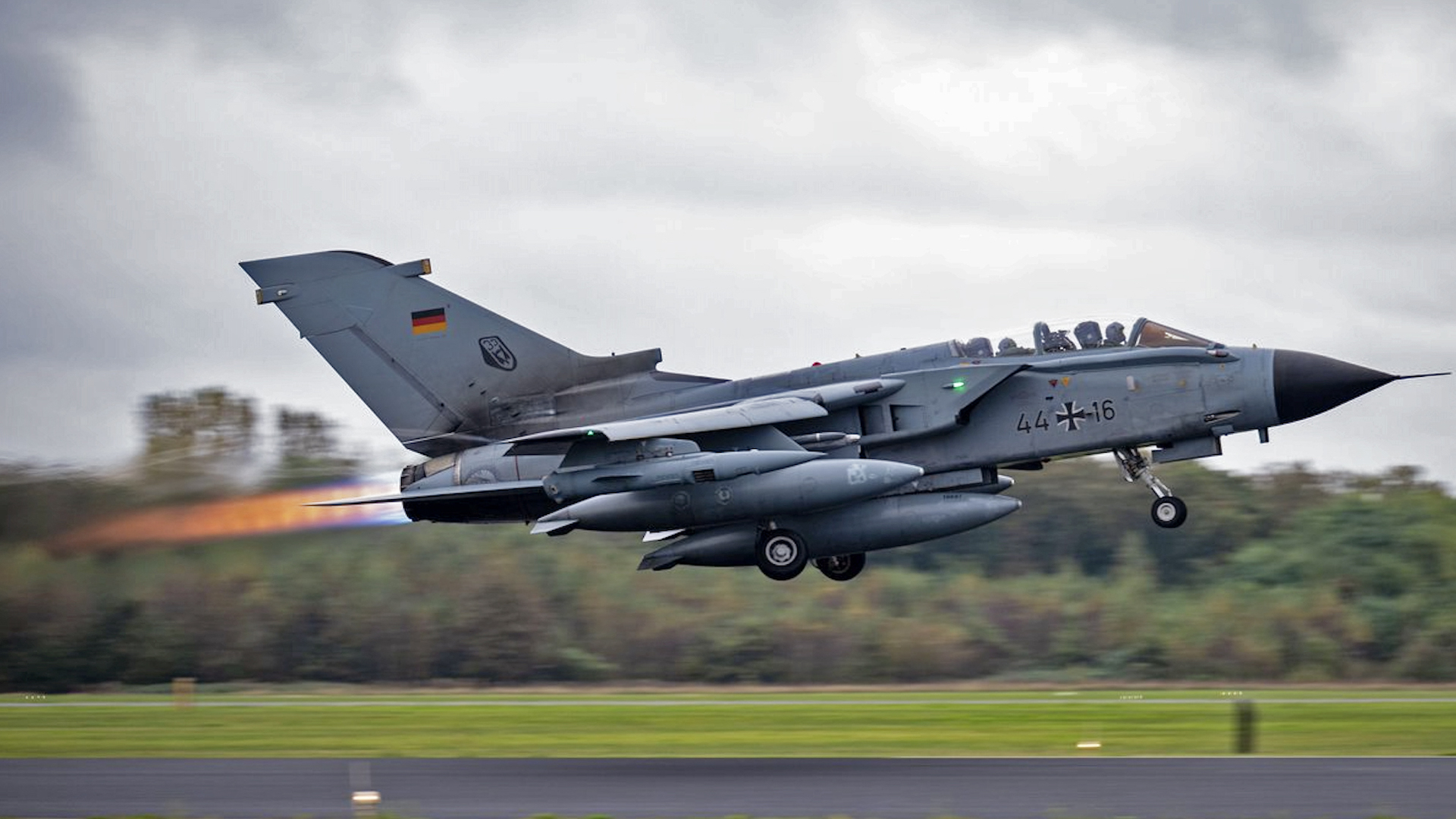Steadfast Noon, the North Atlantic Treaty Organization’s annual tactical nuclear weapons exercise in Europe, was completed yesterday, having been run simultaneously with the British-led Strike Warrior large-scale maritime maneuvers, centered around a British Carrier Strike Group. The combined drills sent a powerful message to Russia, not just in terms of NATO’s enduring nuclear strike potential in Europe but also in regards to its diverse conventional military capabilities spread across the continent.
This year’s Exercise Steadfast Noon began on October 14 and ended on October 24. In a statement, the alliance confirmed that “more than 60” aircraft took part, as well as around 2,000 military personnel from eight air bases.
Steadfast Noon is concerned entirely with nuclear deterrence and involves training flights over Western Europe each fall. The aircraft that take part are nuclear-capable but there are no live warheads used in the exercise. In the past, we have explored exactly what procedures are likely practiced in Steadfast Noon and how these drills are a cornerstone for ensuring readiness to launch a nuclear attack during a crisis.
Under the NATO nuclear-sharing arrangement, U.S. B61 nuclear gravity bombs are understood to be housed in Belgium, Germany, Italy, the Netherlands, and Turkey, and can be employed by tactical jet aircraft from approved member states. Turkey notably hosts B61s, but is not among the countries that could employ them. Non-strategic NATO combat jets currently capable of carrying nuclear weapons include the F-15E, F-35A, F-16, and Tornado. They are referred to as Dual-Capable Aircraft (DCAs) in NATO parlance, and you can read more about them here.
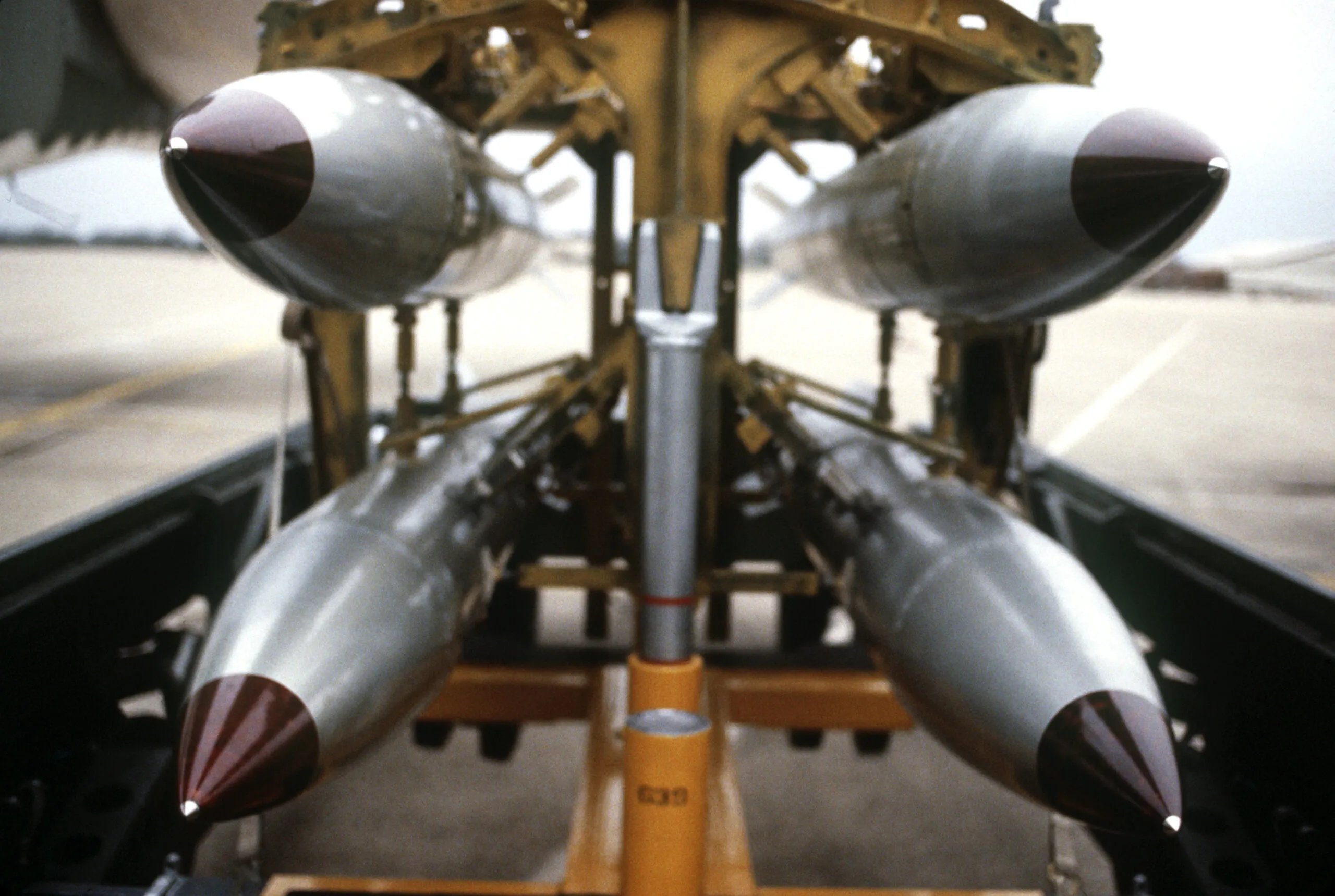
“Nuclear deterrence is the cornerstone of allied security,” NATO Secretary General Mark Rutte said, ahead of this year’s exercise. “Steadfast Noon is an important test of the Alliance’s nuclear deterrent and sends a clear message to any adversary that NATO will protect and defend all allies.”
The host countries for this year’s Steadfast Noon were Belgium and the Netherlands (Kleine Brogel and Volkel air bases, respectively), with most training flights taking place over these nations, as well as over Denmark, the United Kingdom, and the North Sea.
This year, the nuclear-capable jets involved in Steadfast Noon reportedly comprised Belgian F-16s, Dutch F-35A stealth fighters, German and Italian Tornado swing-wing strike aircraft, as well as U.S. Air Force B-52s, F-15Es, and F-35As.
A notable feature of this year’s nuclear exercise was the involvement of Royal Netherlands Air Force F-35As, for the first time since these were declared ready to perform nuclear roles, with the B61-12 thermonuclear bomb. You can read more about this development here.

B-52s have been involved in Steadfast Noon before. Although Steadfast Noon is a tactical nuclear exercise and the Stratofortress is a strategic platform, the exercise also involves a range of aircraft working in packages to get the Dual-Capable Aircraft into the target area. Such scenarios could include B-52s delivering conventional weapons. For some time now, the only nuclear weapons available to the B-52 are cruise missiles – currently AGM-86B Air-Launched Cruise Missiles (ALCMs) that are set to be eventually replaced by new AGM-181 Long Range Stand-Off (LRSO) types.
Supporting these nuclear strike platforms were various fighter escorts, aerial refueling tankers, airborne early warning, and electronic warfare aircraft.
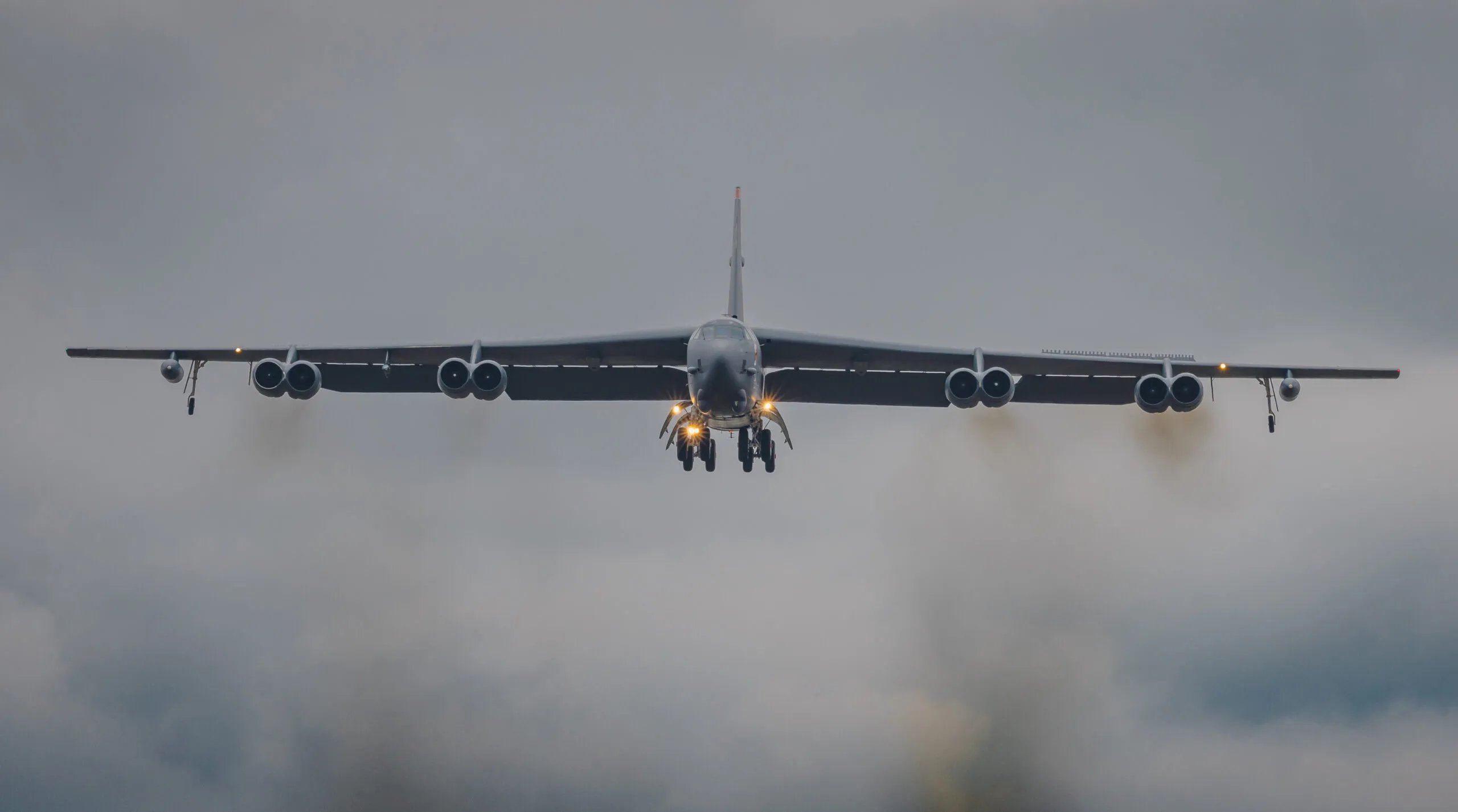
In all, 13 NATO nations took part on some level.
According to reports ahead of Steadfast Noon, other countries involved comprised the Czech Republic (with Gripen multirole fighters), Denmark (F-16), Finland (F/A-18), Greece (F-16), Poland (F-16), Romania (F-16), Turkey (F-16), and the United Kingdom (F-35B and Typhoon). Meanwhile, non-nuclear-capable Eurofighter EF2000s from both Germany and Italy were also listed as participants.
Finland’s presence in the exercise was especially notable, with the Nordic country only having joined NATO in April 2023. The country applied to join the alliance in May 2022, along with Sweden, in response to Russia’s full-scale invasion of Ukraine.
Poland, meanwhile, is not currently a member of NATO’s nuclear weapon-sharing program but has expressed an interest in at least hosting weapons in the past. This policy position has been underscored by concerns over Russia’s decision last year to forward-deploy nuclear weapons in Belarus in cooperation with that country’s military.
Some other new developments that would have been featured in this year’s exercise were identified by the Federation of American Scientists (FAS) think tank.
In particular, the think tank notes that there has been significant recent modernization of infrastructure at nuclear-tasked air bases in Europe.
“This modernization involves security upgrades to the underground vaults that store the U.S. nuclear weapons, underground cables and nuclear command and control systems, and facilities needed for the new F-35A nuclear-capable fighter-bomber,” FAS states in its related report.

Modernization has included special loading pads at Kleine Brogel in Belgium, Ghedi in Italy, and Volkel in the Netherlands to receive U.S. Air Force C-17 airlifters that transport nuclear weapons and service equipment.
Kleine Brogel has also received major upgrades to its weapons maintenance facilities, where nuclear weapons are stored and worked on.
At Volkel, FAS has identified the construction of a new wall in front of an aircraft parking area, to keep this hidden from spotters and other observers outside the base.
In Germany, Büchel air base is midway through an upgrade that is adding, among others, a service area for Germany’s future nuclear-capable F-35As and a refurbished runway. There is also evidence here of security upgrades for the nuclear weapons area and a possible loading pad for C-17s.
One other NATO air base in particular has come under extensive scrutiny in recent months. This is RAF Lakenheath in England, used by the U.S. Air Force, where the nuclear mission is expected to return after a long absence. The base is home to the 48th Fighter Wing, part of U.S. Air Forces in Europe, which includes squadrons of nuclear-capable F-15Es and F-35As.
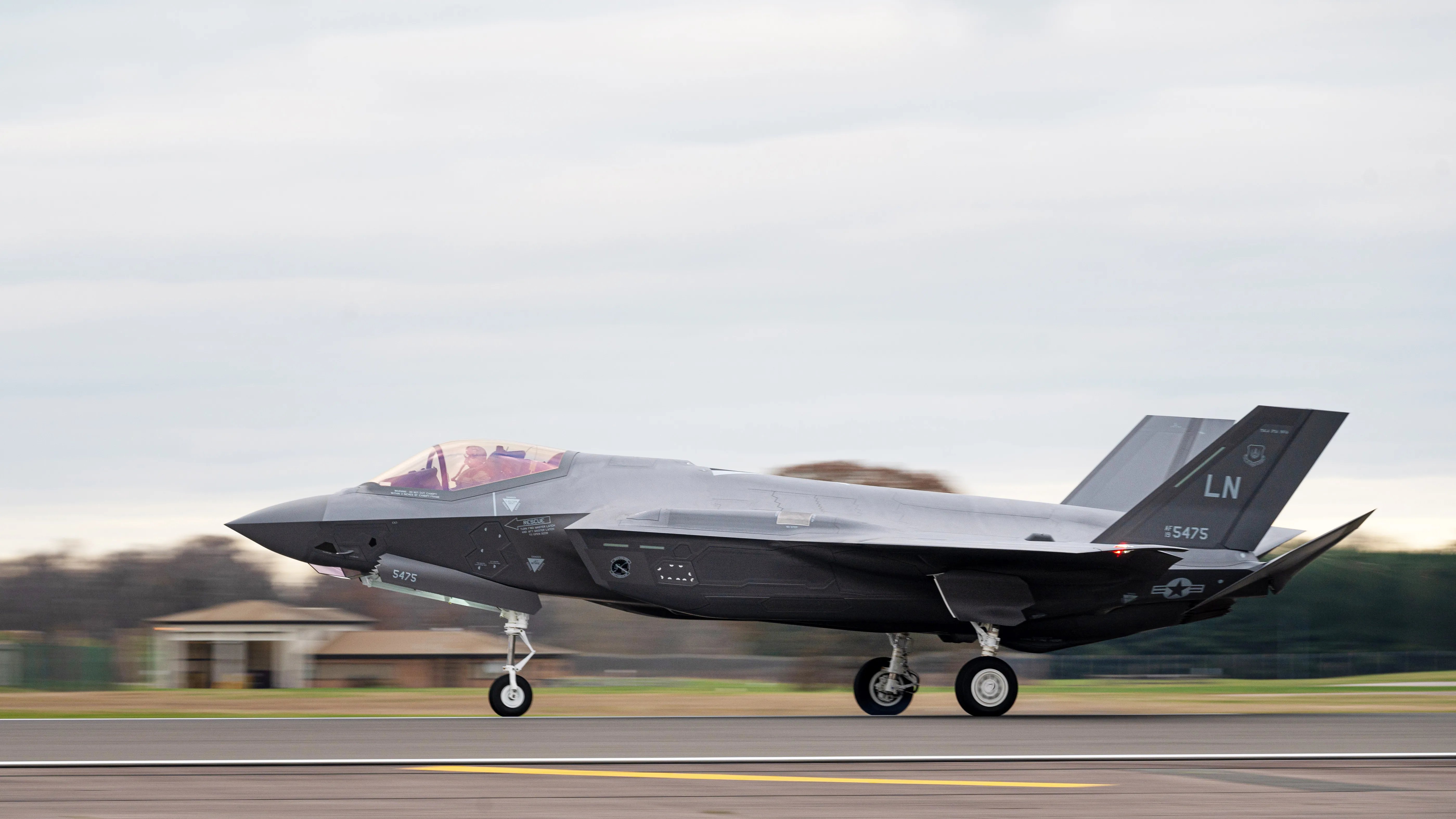
However, there is still a degree of mystery around the nature of the nuclear mission at the U.K. base.
Since 2022, Lakenheath has been listed as one of the NATO bases undergoing nuclear upgrades. The Pentagon has remained tight-lipped about this, but construction work on new aircraft shelters and underground vaults to store nuclear weapons has been confirmed by satellite images.
Whether nuclear weapons will be permanently stored at Lakenheath is unclear and it remains possible that the facilities here are intended as a backup for the other air bases in Europe with a NATO nuclear mission.
The total number of aircraft in Steadfast Noon appears to have been a modest increase over the number of aircraft involved in last year’s drill (“up to 60”) but more significant is the fact that NATO air forces in Europe were simultaneously engaged in Exercise Strike Warrior.
The U.K.-run Strike Warrior maneuvers took place primarily off the coast of Scotland over the same timeframe and had the main role of confirming that the U.K. Royal Navy’s Carrier Strike Group, centered around the aircraft carrier HMS Prince of Wales, is ready for operations.
During Strike Warrior, HMS Prince of Wales was supported by warships including the Type 23 Duke class frigates HMS Portland and HMS Iron Duke, the Type 45 Daring class destroyer HMS Dauntless, and an Astute class nuclear-powered attack submarine. These will have come under mock attack from other NATO assets.
As well as British assets, Strike Warrior involved other NATO participants, and most of the nations participating in the British-led exercise also took part in Steadfast Noon.
While at sea for Strike Warrior, the Prince of Wales Carrier Strike Group also joined forces with U.S. Carrier Strike Group 8, centered on the aircraft carrier USS Harry S. Truman, to deliver a powerful statement of NATO’s ability to project power from the sea.
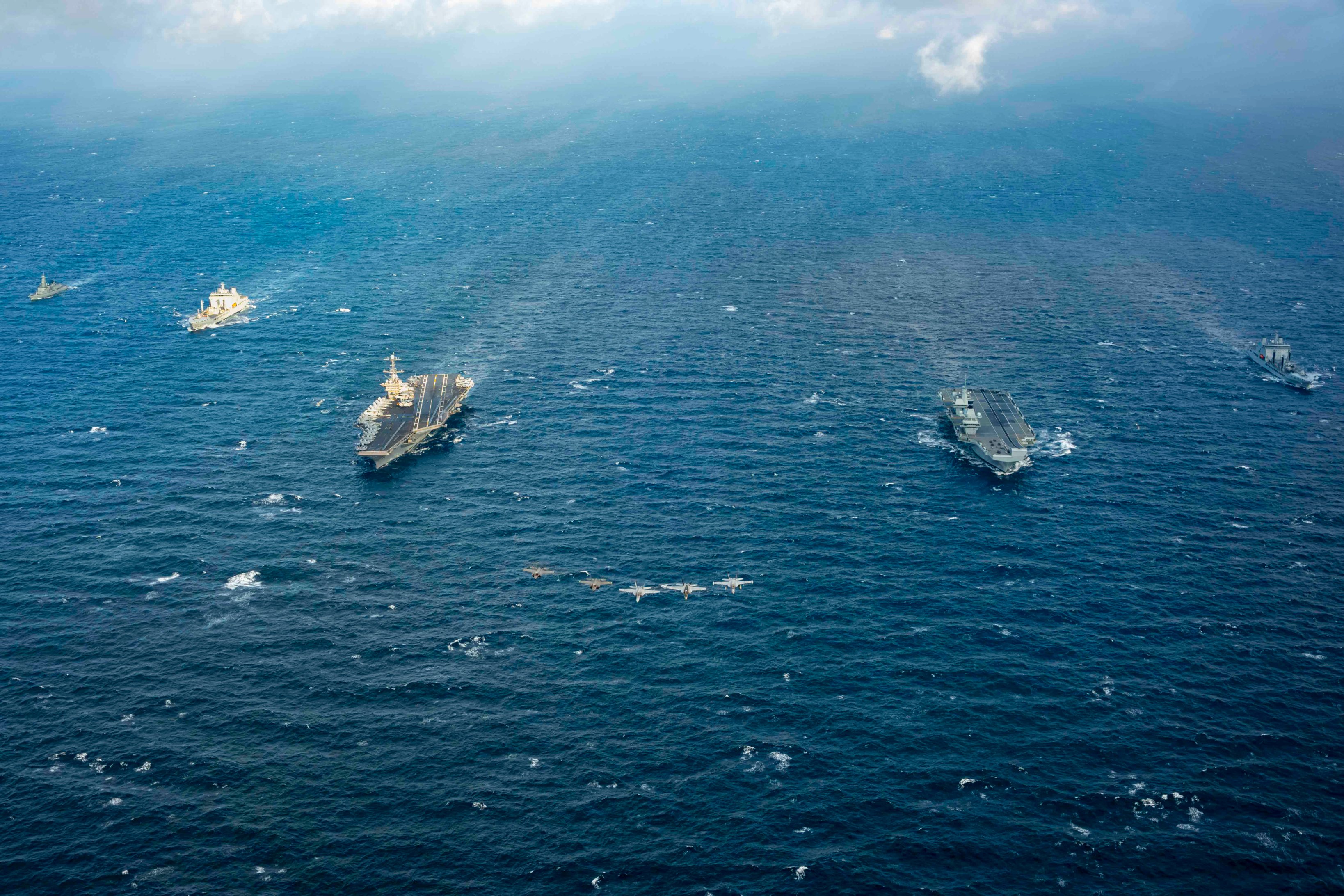
As NATO has stressed, Steadfast Noon is a “routine and recurring training activity,” but there’s no doubt that its relevance is increased during the current period of heightened tensions between the alliance and Russia.
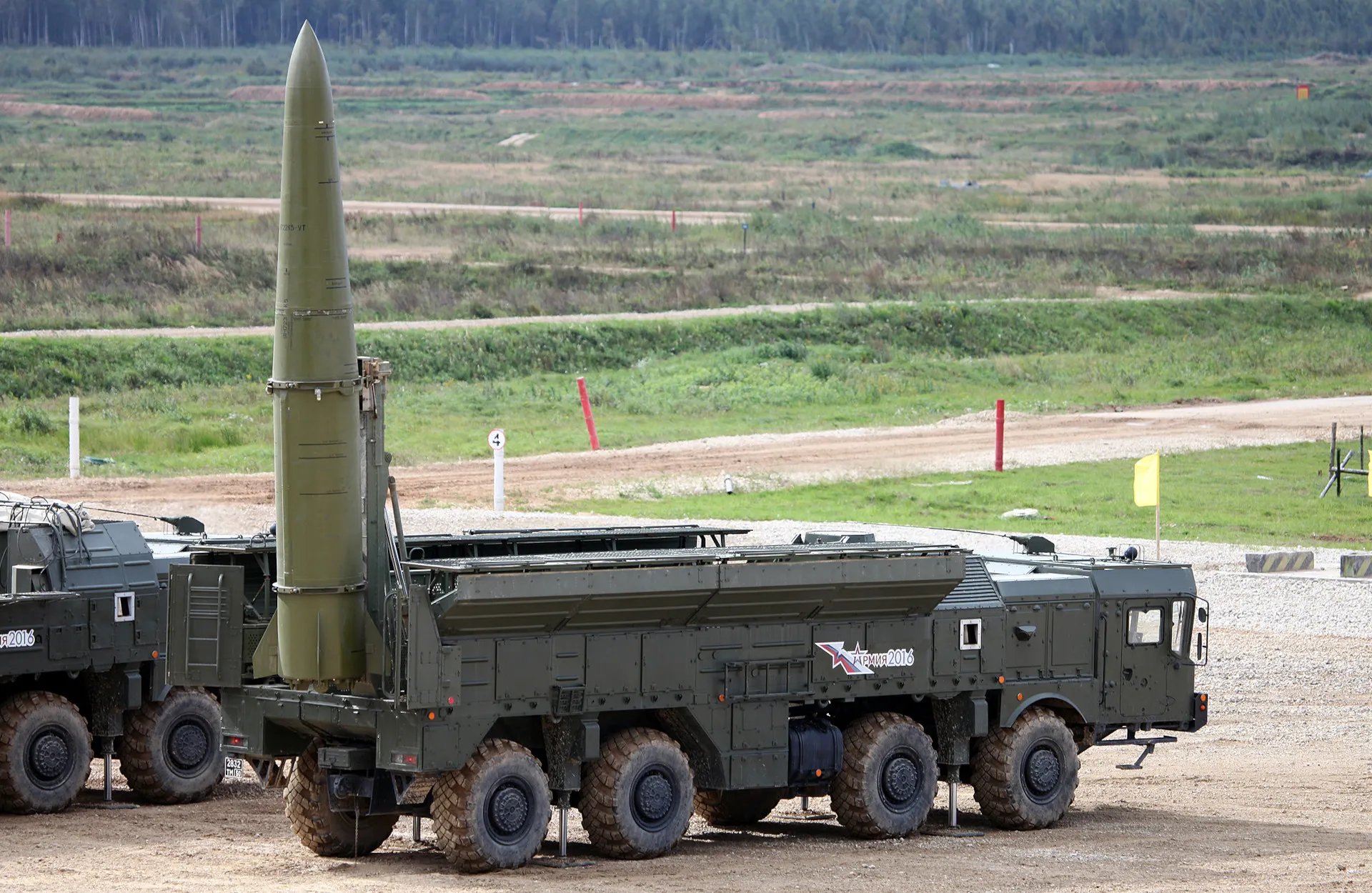
The rhetoric from Moscow has included repeated threats by President Vladimir Putin to use nuclear weapons, as he seeks to thwart NATO support for Ukraine and, especially, to try and ensure that limits remain on Ukraine’s use of Western-supplied long-range weapons to strike targets within Russia’s recognized borders.
Moscow has also held its own high-profile tactical nuclear exercises. These drills have been accompanied by the announcement of possible changes to Russia’s nuclear doctrine. These have included the suggestion that the Kremlin’s threshold for the potential use of nuclear weapons may have been lowered, although the exact permutations of this — and whether it really constitutes a significant change — have been subject to some debate.
NATO has always reiterated that the Steadfast Noon isn’t targeted toward any nation, in particular. A NATO video published yesterday described a “fictitious red adversary,” although the identity of the alliance’s primary nuclear foe has always been clear.
The war in Ukraine has demonstrated Russia’s willingness to launch a full-scale invasion of a European country. Since then, there have been growing concerns that a European NATO member could be next. In that context, exercises that put to the test the nuclear and conventional might of the alliance, like those carried out in recent days, have become especially relevant.
Contact the author: thomas@thewarzone.com
